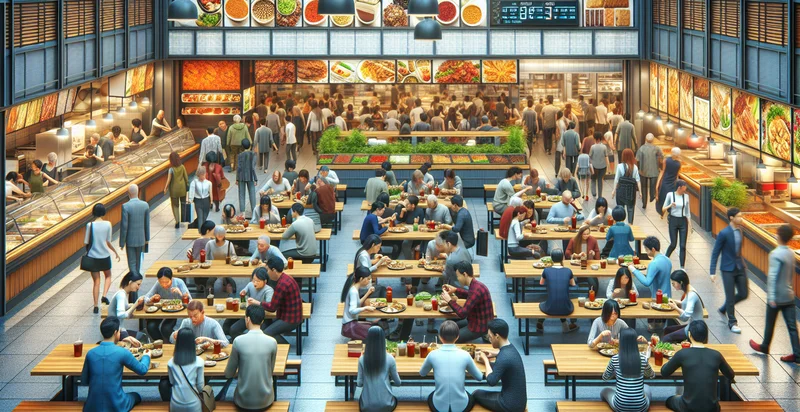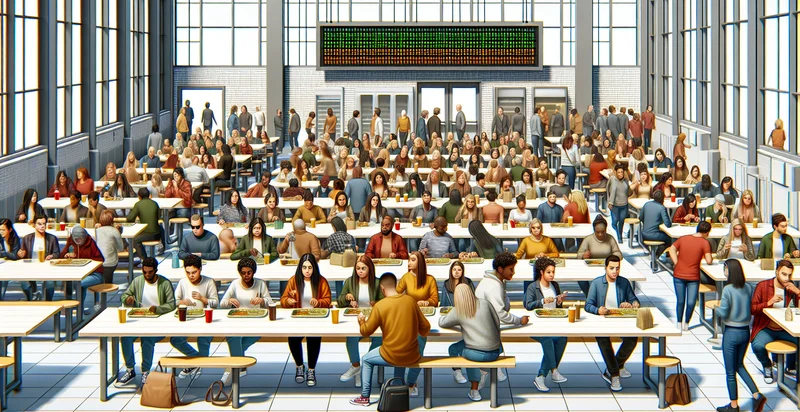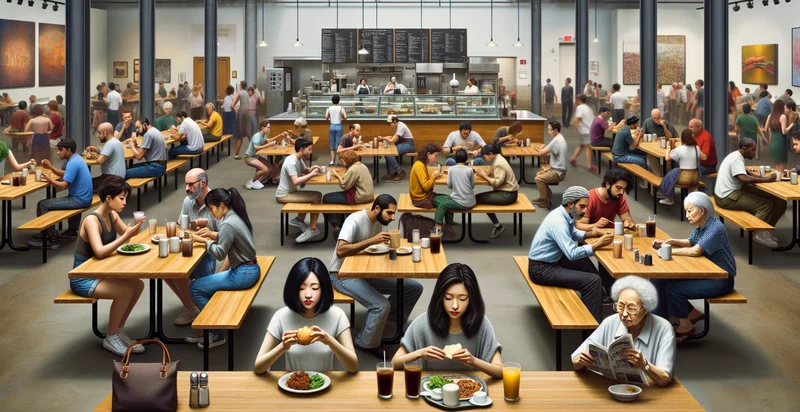Identify food court diners count
using AI
Below is a free classifier to identify food court diners count. Just upload your image, and our AI will predict the number of diners at a food court - in just seconds.

Contact us for API access
Or, use Nyckel to build highly-accurate custom classifiers in just minutes. No PhD required.
Get started
import nyckel
credentials = nyckel.Credentials("YOUR_CLIENT_ID", "YOUR_CLIENT_SECRET")
nyckel.invoke("food-court-diners-count", "your_image_url", credentials)
fetch('https://www.nyckel.com/v1/functions/food-court-diners-count/invoke', {
method: 'POST',
headers: {
'Authorization': 'Bearer ' + 'YOUR_BEARER_TOKEN',
'Content-Type': 'application/json',
},
body: JSON.stringify(
{"data": "your_image_url"}
)
})
.then(response => response.json())
.then(data => console.log(data));
curl -X POST \
-H "Content-Type: application/json" \
-H "Authorization: Bearer YOUR_BEARER_TOKEN" \
-d '{"data": "your_image_url"}' \
https://www.nyckel.com/v1/functions/food-court-diners-count/invoke
How this classifier works
To start, upload your image. Our AI tool will then predict the number of diners at a food court.
This pretrained image model uses a Nyckel-created dataset and has 9 labels, including 1-5, 101-200, 11-20, 201-500, 21-30, 31-50, 500+, 51-100 and 6-10.
We'll also show a confidence score (the higher the number, the more confident the AI model is around the number of diners at a food court).
Whether you're just curious or building food court diners count detection into your application, we hope our classifier proves helpful.
Related Classifiers
Need to identify food court diners count at scale?
Get API or Zapier access to this classifier for free. It's perfect for:
- Crowd Management: Utilizing the food court diners count identifier can help mall management monitor peak dining hours and crowd density. This data can enable staff to optimize seating arrangements and manage customer flow to enhance the dining experience.
- Inventory Optimization: Restaurants in the food court can use the diner count to adjust their inventory levels in real-time. By predicting customer volume, they can minimize waste and ensure that popular items are always available during busy periods.
- Marketing Promotions: Food court operators can leverage the identification function to track dining trends and customer behavior. This information can drive targeted marketing promotions to boost sales during off-peak hours or highlight specific dining options.
- Health and Safety Compliance: Restaurants can ensure compliance with health and safety regulations related to social distancing by monitoring the number of diners in real-time. The data can help businesses make informed decisions about capacity limits and seating arrangements during health crises.
- Customer Experience Improvement: By analyzing patterns in diner counts, food court management can improve their service offerings. They can introduce loyalty programs or special deals tailored to times when the food court is less busy, thereby enhancing customer satisfaction.
- Data-Driven Decision Making: The diner count can contribute to actionable insights for stakeholders in the food court ecosystem, including landlords and franchise operators. With this data, they can make informed decisions about lease renewals, new vendor selection, and space expansions.
- Event Planning: Event organizers can utilize the food court diners count as a metric when planning promotions or large gatherings. Understanding peak times can help them structure events that maximize participation and enhance the overall atmosphere of the food court.


